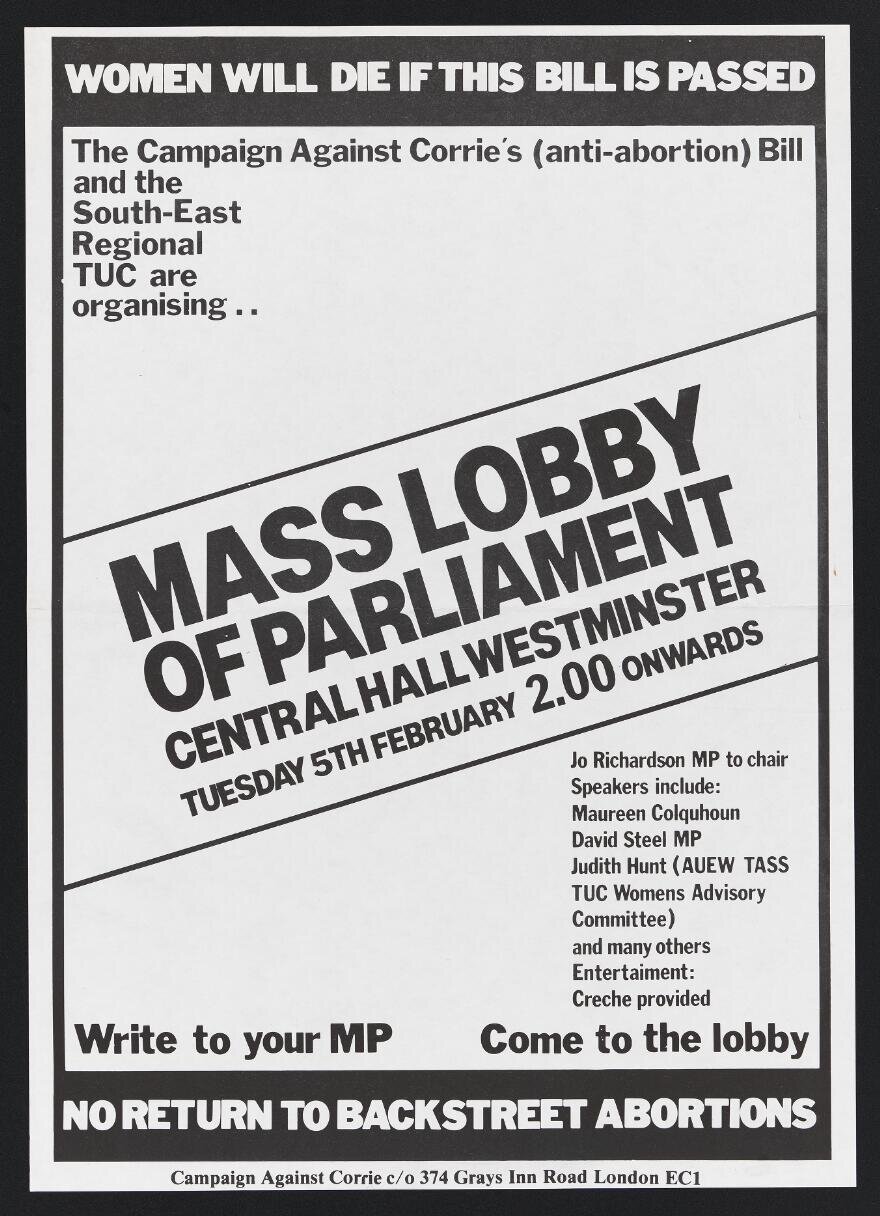History of Abortion
AUTHOR: Dr. KATE LISTER
Abortion is as old as pregnancy itself. The world before safe, legal abortions was a dark and bloody place and has much to teach us about why abortion was legalised in the first place. One of the earliest descriptions of abortion can be found in the ancient Ebers Papyrus (1550 B.C.), which recommends using a plant-fibre tampon coated with a compound of honey and crushed dates to terminate a pregnancy.
Herbs such as savin, rue, ergot and pennyroyal were used widely across the ancient world to induce abortion. This illustration is from Pseudo-Apuleius's 13th century Herbarium. It shows a pregnant woman holding her belly, while another holds pennyroyal and a mortar and pestle.
Library Company of Philadelphia
These herbs were still being sold as ‘female monthly pills’ to cure ‘menstrual blockages’ in the 19th century. At a high enough dose, they could induce a miscarriage, but they could also kill the mother. If these methods proved ineffective (as would usually be the case), the mother was left with increasingly desperate and dangerous methods of abortion. Sitting in scalding hot baths, drinking dangerous amounts of gin, falling down stairs or being punched in the stomach have all been recorded as efforts to induce an abortion; but, if all these failed, surgical intervention would be sought.
Madame Restell (depicted above) was perhaps the famous abortionist in 19th century New York. Restell sold herbal abortifacients and performed surgical abortions. She also ran a boarding house for pregnant women and facilitated the baby’s adoption, for a fee. When abortion was criminalised in America in 1869, Restell was targeted in the press as ‘the wickedest woman in New York’. Restell committed suicide in 1878.
Colour lithograph by S. I︠a︡guzhinskiĭ, 1925, Wellcome Collection
If a woman could not afford the abortionist fee, this procedure could be self-induced, or carried out by anyone willing to try and stab through the cervix with a needle to penetrate the womb. How many women suffered irreparable damage, mutilation, infection and death as a result of this practice is not known; but many were willing to risk the dangers. The above images are a small sample of 19th century court records from the Old Bailey of those who stood trial for accidentally killing a woman in the attempt to procure an abortion.
The movement to legalise abortion emerged in the 1920s and '30s. Activists such as Marie Stopes in England and Margaret Sanger in the US campaigned for access to safe methods of birth control and succeeded in bringing the subject of abortion into public debate.
The Russian Soviet Federative Socialist Republic legalised abortion in 1920. This 1925 poster by S. I︠a︡guzhinskiĭ warns about the dangers of illegal abortion. It reads "Abortions performed by self-taught midwives not only maim the woman, they also often lead to death." Stalin recriminalized abortion in 1936.
Five National Abortion Campaign badges, United Kingdom, 1970, Wellcome Collection
Protests against the Corrie Amendment to the 1967 Abortion Act in the United Kingdom. Colour process prints, 1979-1980, Wellcome Collection
Abortion in cases of threat to maternal health was legalised in Poland in 1932, Iceland in 1935, Catalonia in 1936, and in France in 1939. The Abortion Act legalised abortion in the UK (except in Northern Ireland) under certain circumstances in 1968, Canada and Australia legalised abortion in 1969, and in 1973 the USA finally ruled all the individual state bans on abortion during the first trimester were unconstitutional.
But these rights are fragile and constantly under threat. These ‘right to choose’ badges are from England in 1975 when The National Abortion Campaign (NAC) formed to protest proposed changes to the 1967 Abortion Act in Britain.
As I write this, the states of Alabama and Georgia are passing two of the most aggressive anti-abortion bills in recent American history. And Northern Ireland still has some of the most restrictive laws around abortion in the world, with women facing long jail sentences if they go through with one.
Although we have advanced far in 300 years, in terms of social security, medical care and attitudes to sex in general, the debate surrounding abortion are still rooted in religious moralising that seeks to demonise and punish the women who seek them and doctors who perform them. But, as the history of contraceptives shows, abortion will always be sought, risks will always be taken and no amount of criminalisation, not even the death penalty itself, will change that.







